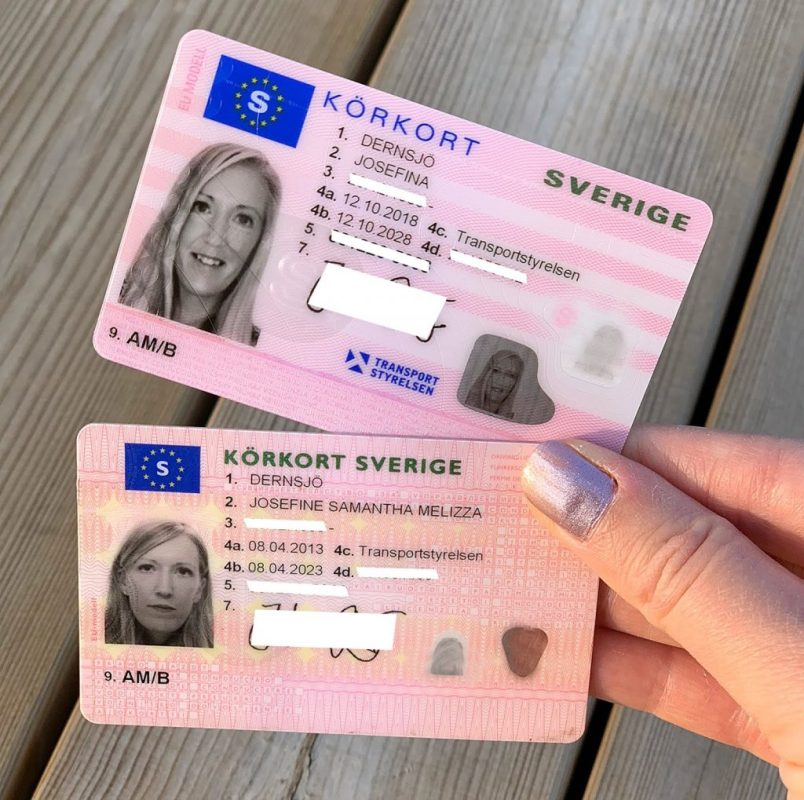
1
маяThe Ultimate Glossary Of Terms About Driving License Id-Handling 2025
The Future of Driving Licenses: ID Handling in 2025
As innovation continues to develop at an unmatched rate, numerous sectors are accepting innovations to improve user experience and effectiveness. Among the areas experiencing considerable transformation is identity management, especially concerning driving licenses. With the intro of digital licenses and cv Körkort advanced identification approaches, the landscape of driving license ID handling is anticipated to go through significant modifications by 2025. This article checks out the anticipated developments in driving license ID handling, the implications for users, and answers regularly asked concerns about the future of driving licenses.
The Evolution of Driving Licenses
Driving licenses have actually traditionally acted as a way of determining a person's authority to run an automobile. They likewise serve numerous secondary purposes, including age confirmation and identity verification for banking and travel. Nevertheless, the physical card system has restrictions, including risks of counterfeiting, loss, and outdated details. As society seriously counts on effective and safe identification systems, the shift toward digital licenses is becoming significantly popular.
Existing Trends in Driving License ID Handling
Digital Licenses: Many states are piloting digital driving licenses that enable users to save their qualifications on their mobile phones. These digital licenses are created with sophisticated security functions, consisting of biometric data, and can be scanned or shared securely.
Blockchain Technology: Some jurisdictions are checking out blockchain to enhance the security and authenticity of driving licenses. This innovation guarantees that information can not be tampered with which the data is quickly proven.
Facial Recognition: Increasingly used in recognition practices, facial recognition innovation can accelerate the process of verifying an individual's identity versus their driving license. This innovation likewise assists minimize scams and keep the integrity of the licensing systems.
Multi-Functional Licenses: Future driving licenses may integrate extra functions such as health records, travel documents, and even payment systems, providing a thorough identity service.
The Benefits of Digital Driving Licenses by 2025
The shift towards digital driving licenses presents a number of advantages, consisting of:
Convenience: Users can access their licenses anytime, which removes the need for physical cards. This is particularly helpful when individuals forget their license, as digital copies can be recovered rapidly.
Security: Advanced security procedures can lower the threat of identity theft, fraud, and unauthorized duplication. Digital licenses often include file encryption and biometric confirmation.
Effectiveness: OnlineköRkort Reduced wait times at federal government offices and Körkortobline - Http://bbs.wuhudj.com - throughout traffic stops, as law enforcement can confirm digital licenses quickly.
Implications for Users
While the advancements in driving license ID managing present many benefits, they also feature challenges. Users need to adjust to new innovation and guarantee they understand the changes and their implications. Here are some factors to consider:
Privacy Concerns: With increased digital footprints, there will be heightened concerns over data privacy and how biometric information is stored and körkot (click through the following website) utilized.
Accessibility Issues: Individuals without access to smart devices or digital technologies may face barriers to acquiring and using digital licenses.
Regulatory Compliance: With different jurisdictions adopting different systems and transportmyndigheten procedures, users need to understand their local laws relating to digital licenses and recognition.
Anticipated Changes in Driving License ID Handling by 2025
| Element | Existing Status | Anticipated Change by 2025 |
|---|---|---|
| License Format | Physical cards | Mainly digital licenses |
| Confirmation Process | Manual checks | Automated biometric confirmation |
| Security Measures | Standard holograms and functions | Advanced encryption and blockchain |
| Jurisdictional Differences | Fragmented procedures throughout states | More standardized national systems |
| User Interaction | In-person renewals and checks | Mobile applications for management |
FAQs
1. What is a digital driving license?A digital driving license is an electronic variation of a traditional driving license that is saved on a mobile phone. It can be used for identification and confirmation in various circumstances, with boosted security functions to prevent scams.
2. How will digital licenses boost security?Digital licenses make use of file encryption and biometric information, making them more hard to forge or misuse compared to conventional cards. In addition, blockchain innovation can guarantee information authenticity and stability.
3. Will everyone be needed to switch to a digital license?While lots of jurisdictions are moving towards digital licenses, policies might vary. Users are motivated to contact their regional licensing authorities for particular guidelines.
4. What are the prospective downsides of digital licenses?Some possible downsides include personal privacy issues concerning data storage, availability problems for individuals without smartphones or digital literacy, and the need for a robust regulatory structure to manage security and user rights.

5. How can I get ready for the shift to digital licenses?Stay informed about regional efforts regarding digital licenses, check out available mobile applications for managing identification, and cultivate digital literacy to navigate new technologies confidently.
The future of driving licenses and ID handling is poised for substantial development by 2025. As digital licenses end up being more common, users will experience enhanced security, convenience, and effectiveness. However, along with the benefits come obstacles that will need public awareness and adaptation. Stakeholders should prioritize education, guideline, and availability to ensure a smooth shift that empowers individuals with the recognition tools of the future. As technology advances, so too will the approaches through which society handles identity, particularly important in procedures as basic as operating an automobile.
Отзывы